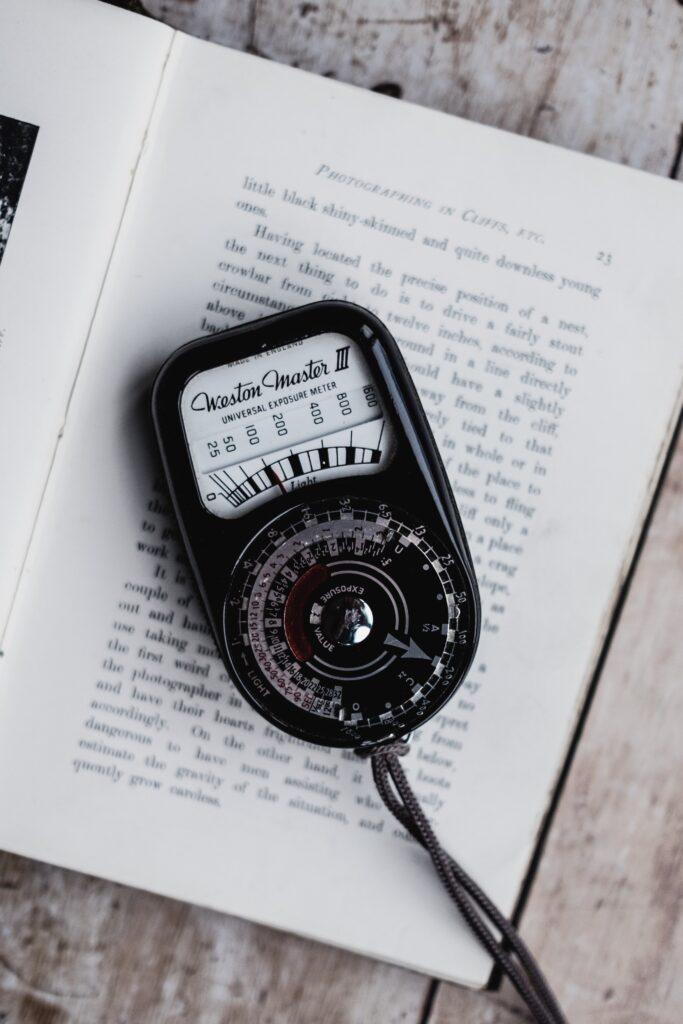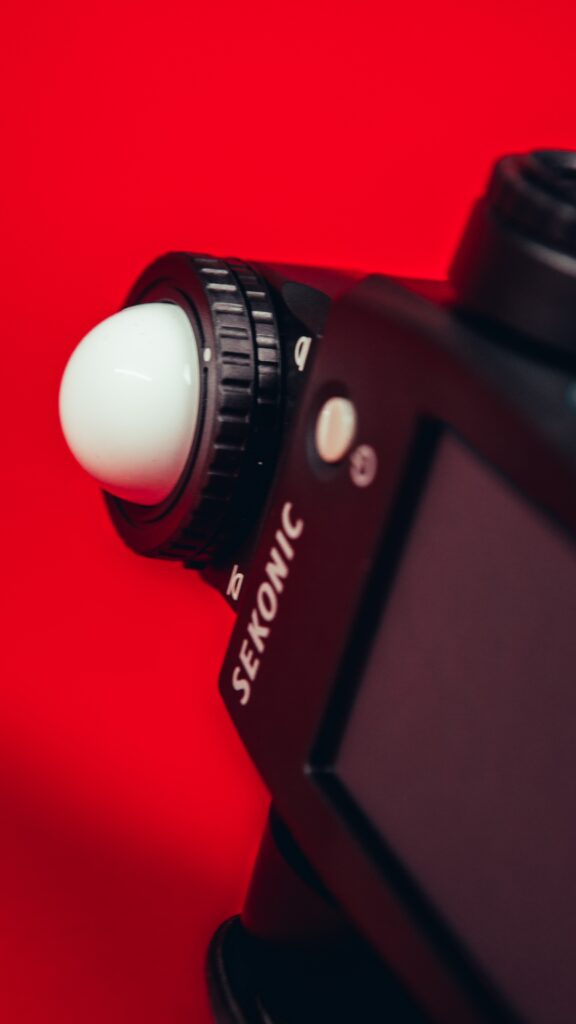In this article, I’ll explain what a light meter is and how it is used in photography. You’ll learn why it is an essential tool for achieving the perfect exposure in your photos. Additionally, I’ll discuss the different types of light meters available and give you some tips on how to use them effectively. By the end of this article, you’ll have a clear understanding of how a light meter can enhance your photography skills.
Overview
Definition of a Light Meter
A light meter is a device used to measure the intensity of light in a specific location. It is an essential tool for photographers, cinematographers, and professionals in various fields who rely on accurate lighting measurements. By accurately measuring the light, a light meter helps users determine the correct exposure settings for their equipment, ensuring optimal results.
Importance of Light Meters
Light meters play a crucial role in various industries and applications where precise lighting is required. They enable users to achieve consistent lighting, accurate exposures, and creative control over their work. Whether you are a professional photographer, cinematographer, architect, or involved in industrial lighting, a light meter is an indispensable tool for achieving desired results.
Types of Light Meters
Incident Light Meters
Incident light meters measure the light falling on a subject rather than the light reflected by it. They are commonly used in photography and cinematography to determine the appropriate exposure settings. Incident light meters are held close to the subject, typically in front of it, to measure the light falling on the subject’s face or another part of the scene. By measuring the incident light, these meters provide accurate exposure readings.
Reflected Light Meters
Reflected light meters, as the name suggests, measure the light reflected by the subject. They are widely used in various fields, including photography, cinematography, and architecture. Reflected light meters typically have a built-in sensor that measures the light reflected from the subject back to the meter. These meters are often handheld or integrated into cameras and help determine the appropriate exposure settings based on the reflected light.
Color Light Meters
Color light meters, also known as spectrometers or colorimeters, measure not only the intensity of light but also its color characteristics. They are primarily used in fields where color accuracy is critical, such as photography, cinematography, and industrial lighting. Color light meters analyze the light spectrum and provide detailed information about color temperature, color rendering index (CRI), and other color-related parameters.

How Light Meters Work
Measurement Principles
Light meters work based on the principles of photoelectric measurement. They consist of a sensor that detects the incoming light and converts it into an electrical signal. The sensor’s sensitivity to different wavelengths of light determines its accuracy and range of measurements. The electrical signal is then processed by the light meter’s internal circuitry to provide the user with accurate light readings.
Exposure Value (EV)
Exposure Value (EV) is a measure of the amount of light hitting a scene. It is an essential concept in photography and cinematography and is used in conjunction with a light meter reading to determine the optimal exposure settings. EV takes into account the light intensity, shutter speed, and ISO sensitivity to provide a standardized measure of exposure.
Metering Modes
Light meters offer different metering modes to suit various lighting situations. The most common metering modes include spot metering, center-weighted metering, and multi-area metering. Spot metering measures the light intensity in a specific area of the scene, while center-weighted metering considers the entire scene but gives more weight to the center. Multi-area metering evaluates the light intensity across different areas of the scene and provides an average reading.
Using a Light Meter
Setting Up the Light Meter
Before using a light meter, it is essential to set it up properly. Begin by selecting the appropriate metering mode for your specific needs. Then, set the desired ISO sensitivity and shutter speed on the light meter. The ISO sensitivity determines the sensor’s sensitivity to light, while the shutter speed controls the duration of the exposure. Once the settings are configured, the light meter is ready for use.
Metering Techniques
To measure the light accurately, it is crucial to position the light meter correctly. For incident light meters, hold the meter close to the subject, facing towards the light source. Ensure that the meter is not blocking any incoming light. For reflected light meters, aim the meter towards the subject while considering the angle of the light. Reflective surfaces and different lighting conditions may require adjustments in the metering technique.
Interpreting Readings
After measuring the light, the light meter provides a reading that indicates the light intensity or exposure value (EV). Interpreting these readings is essential to achieve the desired results. A higher reading indicates a brighter scene, while a lower reading suggests a darker scene. Understanding the relationship between the light meter readings and the desired exposure settings helps users make informed decisions.

Applications of Light Meters
Photography
In the field of photography, light meters are indispensable tools for achieving accurate exposures. They provide photographers with precise readings, allowing them to determine the optimal combination of aperture, shutter speed, and ISO sensitivity. Light meters are particularly useful in situations where the lighting conditions are challenging or when using film cameras that do not have built-in light meters.
Cinematography
Light meters are essential in cinematography, where lighting plays a crucial role in creating the desired atmosphere and visual effects. Cinematographers use light meters to measure the light intensity and ensure consistent lighting throughout the filming process. Accurate light measurements help cinematographers adjust their lighting setups, select appropriate camera settings, and maintain continuity in different scenes.
Architecture
In architectural photography and design, light meters are valuable tools for assessing lighting conditions and determining the best ways to capture the architectural features. Light meters help architects analyze the available natural light, measure the balance between natural and artificial lighting, and ensure proper exposure in both interior and exterior shots. Precise light measurements contribute to the accurate visualization of architectural designs.
Industrial Lighting
In industrial and commercial lighting applications, light meters are used to ensure proper lighting levels for safety, productivity, and energy efficiency. They are employed in lighting audits, where they measure the existing lighting conditions and assess the need for improvements or adjustments. Light meters help industrial professionals achieve appropriate lighting levels and comply with lighting regulations and standards.
Advantages of Light Meters
Accurate Exposure
Achieving accurate exposure is crucial in various fields, and light meters provide the necessary accuracy. By measuring the light intensity precisely, light meters help users determine the optimal exposure settings, resulting in well-exposed photographs, videos, or architectural renderings. Accurate exposure ensures proper tonal range, reduces the need for post-processing adjustments, and enhances the overall quality of the work.
Consistency in Lighting
Consistency in lighting is essential for achieving uniformity and continuity in visual projects. Light meters enable users to measure the light in different areas of the scene and ensure consistent lighting throughout. This is especially important in cinematography, where lighting continuity is critical for seamless storytelling. With light meters, cinematographers can achieve consistent lighting setups, maintain visual consistency across scenes, and enhance the overall viewing experience.
Creative Control
Light meters empower photographers and cinematographers with creative control over their work. By providing accurate light readings, light meters allow users to make informed decisions about exposure settings, lighting ratios, and overall lighting aesthetics. They help achieve specific moods, emphasize certain elements, or control the balance between different light sources. Creative control over lighting leads to unique and compelling visuals, enhancing the artistic expression of the photographer or cinematographer.

Common Features and Functions
Ambient Light Measurement
Light meters typically offer the capability to measure ambient light, which refers to the existing natural or artificial light in a scene or location. This feature is especially useful when assessing the available light or determining the need for additional lighting equipment. By measuring the ambient light accurately, light meters help users determine the appropriate exposure settings and plan their lighting setups accordingly.
Flash Light Measurement
Many light meters also offer the functionality to measure flash or strobe lighting. This feature is particularly important in photography and studio lighting setups where artificial flash lighting is used. By measuring the flash intensity, light meters help photographers adjust their camera settings and flash output power to achieve the desired exposure and avoid overexposure or underexposure.
ISO and Shutter Speed Settings
Light meters allow users to adjust the ISO sensitivity and shutter speed settings to match their specific requirements. ISO sensitivity determines the sensor’s sensitivity to light, with higher ISO values being more sensitive but potentially introducing more noise. Shutter speed controls the duration of the exposure, with faster speeds capturing faster-moving subjects while slower speeds allow for longer exposures. The ability to change these settings ensures compatibility with different cameras and lighting situations.
Choosing the Right Light Meter
Considerations for Photography
When choosing a light meter for photography, it is important to consider factors such as accuracy, range, ease of use, and compatibility with your camera system. Look for a light meter with a wide measurement range to accommodate various lighting conditions. Also, consider the meter’s form factor, display type, and features that align with your specific photography needs, such as flash measurement capabilities or wireless connectivity.
Factors for Cinematography
In cinematography, the requirements for a light meter may slightly differ from photography. Look for a light meter that offers various metering modes, a wide measurement range, and the ability to handle different frame rates. Additionally, consider the meter’s durability, battery life, and compatibility with other cinematography equipment. Advanced features like exposure averaging and wireless connectivity can further enhance the usability for cinematographers.
Budget and User Requirements
Budget is another important factor when choosing a light meter. Light meters vary in price range, with more advanced features usually commanding a higher price. Determine the features that are essential for your specific needs and consider the trade-offs between functionality and price. Additionally, assess the user requirements, such as ease of use, portability, and compatibility with existing equipment, to ensure a seamless integration into your workflow.
Digital vs Analog Light Meters
Advantages of Digital Light Meters
Digital light meters offer numerous advantages over analog light meters. They provide precise and accurate measurements, often with wider measurement ranges. Digital meters typically have built-in LCD displays, allowing users to instantly see the measured values. They may also have additional features like data logging, wireless connectivity, and compatibility with computer software for data analysis or post-processing.
Advantages of Analog Light Meters
Analog light meters, on the other hand, have their own unique advantages. They often have a simpler design and are typically more affordable than digital meters. Analog meters are known for their reliability and ease of use, as they do not require batteries or complex adjustments. Some photographers and cinematographers also prefer the aesthetics and tactile experience of using analog meters, considering them as a nostalgic tool in their craft.
Conclusion
In conclusion, a light meter is an invaluable tool for professionals working in various fields that rely on accurate lighting measurements. Whether you are a photographer, cinematographer, architect, or involved in industrial lighting, a light meter provides the necessary precision, versatility, and control over lighting conditions. From achieving accurate exposures to maintaining consistency in lighting and unlocking creative potential, light meters play a vital role in ensuring optimal results in visual projects. By understanding the different types of light meters, their functionalities, and the considerations when choosing one, you can harness the power of light meters to enhance your work and unleash your creativity.

